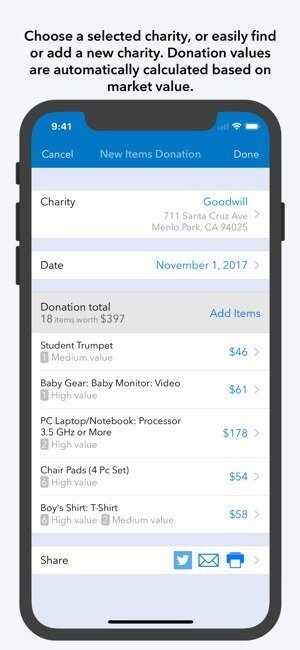Contents:


The formula equals your break-even point in dollars divided by the price for which you sell each unit. A unit might be one product, a billable hour of service or some similar measurement. In the previous example, assume you sell your products for $50 a piece.
Determining the intrinsic value or true worth of a security is highly subjective because each investor uses a different way of calculating intrinsic value, which may or may not be accurate. The margin of safety is the difference between the amount of expected profitability and the break-even point. The margin of safety formula is equal to current sales minus the breakeven point, divided by current sales. It is a graphic relationship between costs, volume and profits. It shows not only the BEP but also the effects of costs and revenue at varying levels of sales. The break-even chart can therefore, be more appropriately called the cost-volume-profit graph.
The concept of break-even analysis is concerned with the contribution margin of a product. The contribution margin is the excess between the selling price of the product and the total variable costs. For example, if an item sells for $100, the total fixed costs are $25 per unit, and the total variable costs are $60 per unit, the contribution margin of the product is $40 ($100 – $60). This $40 reflects the amount of revenue collected to cover the remaining fixed costs, which are excluded when figuring the contribution margin.
No, the break-even point cannot be used to predict future profits. It is only useful for determining whether a company is making a profit or not at a given point in time. Sales below the break-even point mean a loss, while any sales made above the break-even point lead to profits. To determine the amount of remaining capacity after the breakeven point is reached, which tells you the maximum amount of profit that can be generated. Identifying when you’ve broken even is an essential part of any business strategy.
What do below the line costs look like?
However, by doing a break-even analysis of the company operations, they will be able to determine whether or not there are any impacts that are altering the value of the costs. In these kinds of circumstances, exercising proper cost management becomes an absolute must in order to guarantee that they will make a profit from their commercial activities. In the above graph, the breakeven point stands at somewhere between 2000 and 3000 units sold. For FP&A leaders this method of cost accounting can be used to show executives the margin of safety or the risk that the company is exposed to if sales volumes decline. The break‐even point in units of 250,000 is calculated by dividing fixed costs of $300,000 by contribution margin per unit of $1.20. To get to our total costs per month of producing birthday cakes, we need to add the total variable cost per month, and the total fixed cost per month.
- To improve business performance or if fixed costs are too high, the break even point can be lowered by cutting production costs and business expenses.
- This type of analysis involves a calculation of the break-even point .
- With a contribution margin of $40, the break-even point is 500 units ($20,000 divided by $40).
- Learn how to use breakeven analysis to estimate the number of sales units at which net income is zero.
Using the previous information and given that the company has fixed costs of $300,000, the break‐even income statement shows zero net income. Break-even analysis is useful in determining the level of production or a targeted desired sales mix. The study is for a company’s management’s use only, as the metric and calculations are not used by external parties, such as investors, regulators, or financial institutions. This type of analysis involves a calculation of the break-even point . The break-even point is calculated by dividing the total fixed costs of production by the price per individual unit less the variable costs of production. Fixed costs are costs that remain the same regardless of how many units are sold.
How to start a business with no money
To do this, calculate the contribution margin, which is the sale price of the product less variable costs. Assume a company has $1 million in fixed costs and a gross margin of 37%. In this breakeven point example, the company must generate $2.7 million in revenue to cover its fixed and variable costs. If it generates more sales, the company will have a profit.
Ed Sheeran releases new single ‘Boat’ along with music video – planetradio.co.uk
Ed Sheeran releases new single ‘Boat’ along with music video.
Posted: Fri, 21 Apr 2023 16:01:49 GMT [source]
The last line represents variable costs, starting point ( 0, $0) and ending point (400, $2500). Notice the ending point of the total costs line equals the fixed cost and variable cost totals. The total fixed costs are $50k, and the contribution margin ($) is the difference between the selling price per unit and the variable cost per unit.
How to use the right performance metrics to make business decisions
Because breakeven analysis is often computed on a product line basis, adding new products or eliminating unprofitable product lines will change your company’s overall breakeven point. The fixed overhead allocated to each product will be different after a change in product offerings. And variable costs will be added for new products or eliminated when a product is cut. A breakeven point is used in multiple areas of business and finance. In accounting terms, it refers to the production level at which total production revenue equals total production costs.
At this point, contribution is equal to fixed expenses and there is no profit or loss. If the contribution is more than the fixed expenses, profit will arise and if the contribution is less than the fixed expenses, loss will arise. The chart helps in ascertaining the amount of contribution at different levels of activity besides the break-even point. In this method, the fixed cost line is drawn parallel to the X-axis. The contribution line is then drawn from the origin which goes up with the increase in output.
Also review variable costs to see if they can be eliminated, since doing so increases margins and reduces the breakeven point. Direct labor, the cost of electricity, and the cost of raw materials are all examples of variable costs. All of these are together referred to as COGS, or cost of goods sold. If you’re trying to figure out your break-even point, every time you add a customer, you have to subtract commissions out of gross profit. You are trying to see your gross profit minus any other variable expenses. If you have a commission to pay any profit that comes in, that dollar is not available to pay for your fixed costs.
Sainsbury’s drops Arla as own-label milk supplier – The Grocer
Sainsbury’s drops Arla as own-label milk supplier.
Posted: Thu, 20 Apr 2023 11:47:49 GMT [source]
Margin of safety is the level by which sales units or revenue can fall before reaching the break-even point. Monitoring margin of safety increases the probability of business success when appropriate actions are taken to keep the sales level above the break even point. A break even point is the point at which your total revenue is equal to your total costs, so your business has neither made nor lost money. Essentially, BEP tells you when your production costs are the same amount as your product revenue. In stock and option trading, break-even analysis is important in determining the minimum price movements required to cover trading costs and make a profit.
Contribution margin is the revenue that is generated beyond what is necessary to cover the variable costs of production, such as materials and non-salaried labor costs. This excess revenue is what is available to cover the fixed costs. It can also include the firm’s profit if the amount exceeds the total amount of the fixed costs. If a firm has fixed costs of $60,000, a price of $7.00, and a break-even point of 25,000 units, the variable cost per unit is A.
Another way to normal balance break‐even sales dollars is to use the mathematical equation. A break-even analysis allows you to determine your break-even point. Once you crunch the numbers, you might find that you have to sell a lot more products than you realized to break even. If you increase your gross profit, all that extra money goes into the bottom line and straight to your bank account.
See advice specific to your business
” into a much easier to answer “is it reasonable to achieve this particular sales volume? Graphically, we would get a line with the same slope as the variable costs one, but instead of starting at a cost of 0, it starts at the level of fixed costs that we have. When a manufacturing business buys new production equipment, it replaces variable labor costs with a fixed cost. As production volume increases, the benefit of the new equipment will increase. Also, by understanding the contribution margin, businesses can make informed decisions about the pricing of their products and their levels of production.

In terms of its cost structure, the company has fixed costs (i.e., constant regardless of production volume) that amounts to $50k per year. Recall, fixed costs are independent of the sales volume for the given period, and include costs such as the monthly rent, the base employee salaries, and insurance. When it comes to calculating the break-even point, there are two basic formulas that are often utilized. The first formula is the break-even point in terms of units, while the second one is the break-even point in terms of sales.
This visual line chart tells your story clearly outlining revenue, fixed costs, and total expenses, and the breakeven point. To find out the number of units that need to be sold to break even, the fixed cost is divided by the contribution margin per unit. These are costs that remain constant over some relevant range of output.
Importance of the Break Even Point Formula
Below break-even, you generate a loss; above it, you turn a profit. The contribution margin ratio reveals the percentage of sales that applies to your fixed costs after covering variable costs. When you know your contribution margin ratio, you can figure your break-even point in dollars and units with a couple of straightforward calculations. A company or its business owner can calculate its total revenue, fixed costs, and variable costs through financial analysis. Then it can apply a break-even formula to determine at which point its net profit is zero, either as an amount of revenue or the number of units sold. Revenue represents total income generated from the sale of goods or services by an individual or business.
8 Highest-Paid Remote Jobs That Don’t Need 4-Year Degrees – AOL
8 Highest-Paid Remote Jobs That Don’t Need 4-Year Degrees.
Posted: Fri, 21 Apr 2023 14:52:50 GMT [source]
The contribution margin is sales revenue minus all variable costs. It may be calculated using dollars or on a per unit basis. If The Three M’s, Inc., has sales of $750,000 and total variable costs of $450,000, its contribution margin is $300,000. Assuming the company sold 250,000 units during the year, the per unit sales price is $3 and the total variable cost per unit is $1.80. It can be calculated using either the contribution margin in dollars or the contribution margin per unit.
Breakeven analysis and its underlying contribution margin formula help businesses make decisions to improve performance. Contribution margin is also often used to determine the break-even point and the sales volume required to earn a target profit. Another reason why break-even analysis is important to stock and option traders is that break-even analysis provides insight into their positions’ profitability. By determining the breakeven point for their positions, stock and option traders can gauge the potential risk-reward ratio and make informed decisions as to whether to pursue a stock or option trade. If the stock is trading at a market price of $170, for example, the trader has a profit of $6 (breakeven of $176 minus the current market price of $170). Assume that an investor pays a $5 premium for an Apple stock call option with a $170 strike price.
To see an example of how a firm can use the contribution margin in analyzing operating profit let’s continue to use the bottled drink example from above. It can be calculated at the unit or total level and can be expressed in dollars or as a percentage. Learn the definition of contribution margin and understand its importance in business. The contribution margin simply represents the gross profit of the normal income… Stock and option traders need break-even analysis to facilitate several functions.
- All incremental revenue beyond this point contributes toward the accumulation of more profits for the company.
- This additional billing for time leakage is the simplest way to get back to even and increase your profitability.
- The dangers in not doing a CVP analysis are instantly clear.
These are outgoings such as utilities, commissions paid to salespeople and shipping costs. This calculation shows you the point at which your revenue is equal to your costs, and that’s the break even point. Anything above this represents your profits and means that your business is profitable.
The contribution margin is the difference between revenue and variable costs. The final component of break-even analysis, the break-even point, is the level of sales where total revenue equals total costs. Just imagine that one of your products has a price of $100, your total fixed costs are $25 per unit, and your total variable costs are $60 per unit. The contribution margin is defined as the difference between the revenue and total variable costs. The 40 dollars shown here are the money that was taken in to pay the fixed cost.
In other words, it tells youhow many units you need to sell to have a profit of zero . Barbara is currently a financial writer working with successful B2B businesses, including SaaS companies. She is a former CFO for fast-growing tech companies and has Deloitte audit experience. Barbara has an MBA degree from The University of Texas and an active CPA license. When she’s not writing, Barbara likes to research public companies and play social games including Texas hold ‘em poker, bridge, and Mah Jongg. Break-even analysis is used by a wide range of entities, from entrepreneurs, financial analysts, businesses and government agencies.
